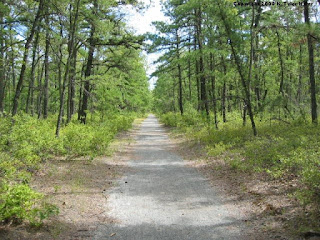Collins, Reryl Robichaud and Karl H. Anderson. 1994. Plant Communities of New Jersey: A study in Diversity. New Brunswick NJ: Rutgers University Press.
They have a chapter on freshwater wetlands in northern New Jersey. While not specifically describing the Delaware River floodplains, perhaps because it forms the western border of NJ and PA, they do describe the floodplains of a river that is in the same physiographic region of NJ. Broadly speaking there are four physiographic regions in New Jersey, the portion of the Delaware River that I visit and the town I live in are in the piedmont region.
Collins and Anderson describe the plants located in the floodplain of the Raritan River in the piedmont regions. Two of the trees that they say are found in these floodplains are the River Birch, and the Sycamore. The links that I have provided are from a wetlands plants database from the U.S. Department of Agriculture. They have a web interface that allows you to narrow your search of wetlands plants to your specific state and by plant type. If you are so inclined, check out the information provided on each of the links I provided for River Birches and Sycamores.
Speaking of Sycamores, I got to know Sycamores because they were numerous Sycamore trees located in the Hundson County town where we used to live. They line many of the residential streets in this town, and are also located in the parks, including the green area along the Passaic River.
I wrote about these two trees, because these were the common trees located in the region between the towpath that we were walking on and the Delaware River. Other trees that we saw were species of Maple and Oak, Hickory and/or Ash and Sweet Gum.
A word about Hickory and Ash. Both have what are known as compound leaflets (5 to 9 leaves). For more information on leaf terminology, see this webpage. There is an important but perhaps subtle difference between the leaf structure of Hickories and Ashes. I'm not sure that I can explain this in any way that will make sense. You will have to trust me that this difference can make it sometimes difficult to distinguish between Ash and Hickories, at least for me. Any tree guide, I have several tree guides including some very good guides put out by the Audubon Society, will have a chapter where they discuss various leaf types and other basic terminology used to identify trees.
Anyway, it was hard for me to distinguish between Ash and Hickory because the foiliage was too high for me to distinguish between the leaf structures of Ashes v Hickories. As for identifying trees by their bark, I am getting better, but it is still hard, sometimes requiring more study. Having read up on Ash and Hickories on my tree guides, when we go back, I may be better able to distinguish between the two.










